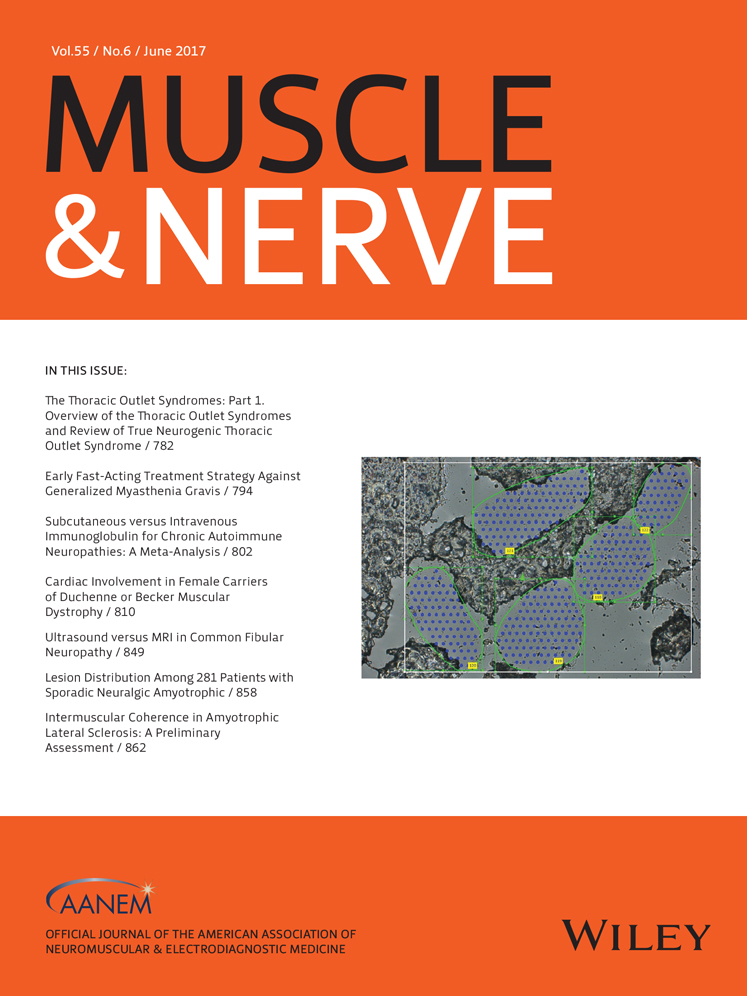Late-onset pompe disease in Iran: A clinical and genetic report
ABSTRACT
Introduction
Pompe disease is characterized by absence or deficiency of acid α-glucosidase, and several causative mutations are known. In this study we report clinical and laboratory data in Iranian patients with late-onset Pompe disease (LOPD), focusing on population-specific mutations.
Methods
Clinical and laboratory data of 14 patients from 10 families with the diagnosis of LOPD were recorded. All had reduced enzyme activity on dried blood spot (DBS) analysis. Genetic investigation was performed to identify the underlying mutations.
Results
The age of onset ranged from <2 to 38 years. The clinical presentations were heterogeneous. Two siblings presented with foot drop. The most common mutation was c.(-32-13T>G). There were 4 novel mutations: c.(2040 + 2dup); c.(1650delG); c.(1837T>G); and c.(2596delG).
Conclusion
This is a comprehensive report of LOPD in Iranian patients. Distinct phenotypic and genotypic features in this population are highlighted. Muscle Nerve 55: 835–840, 2017




